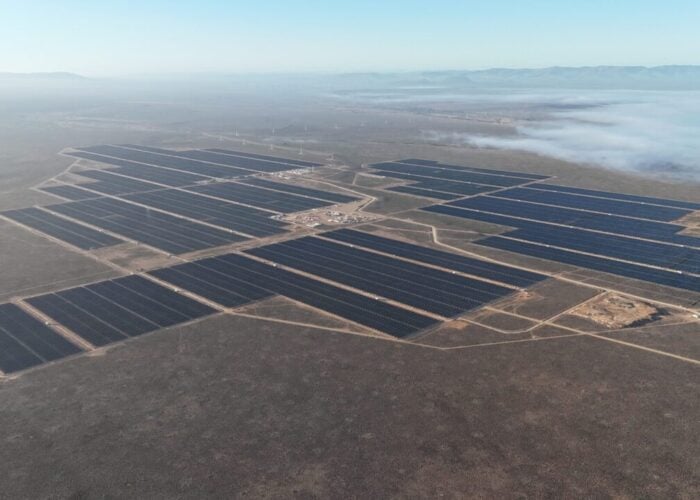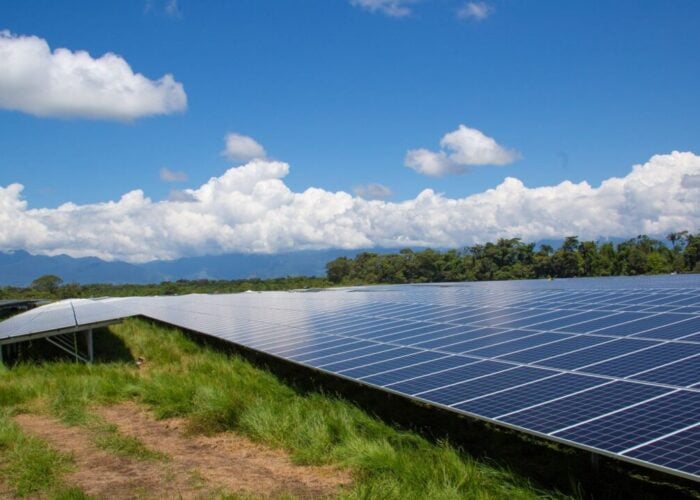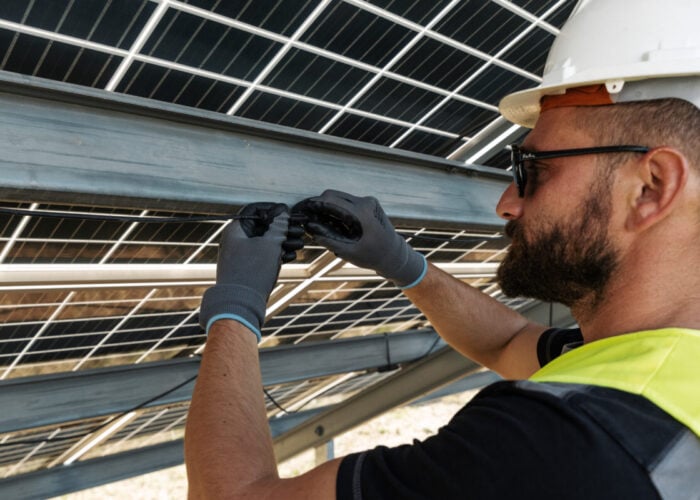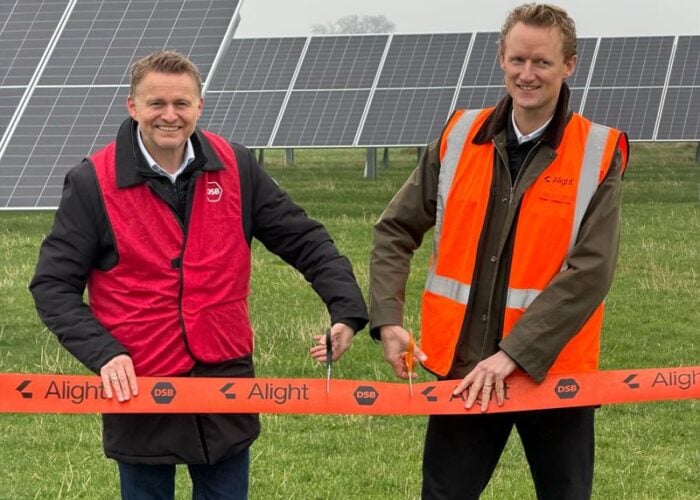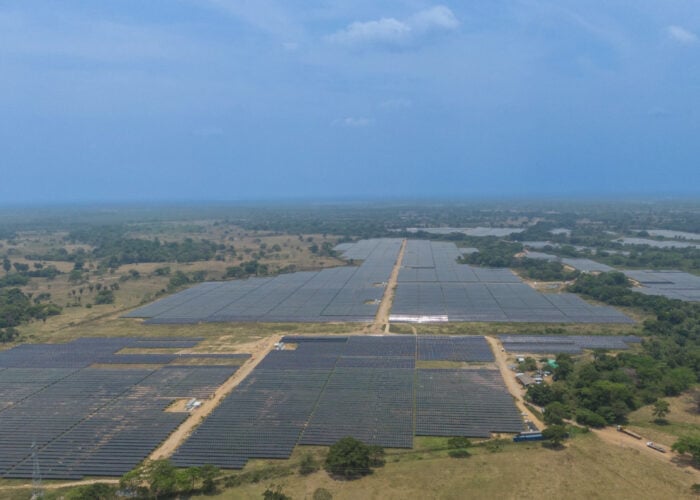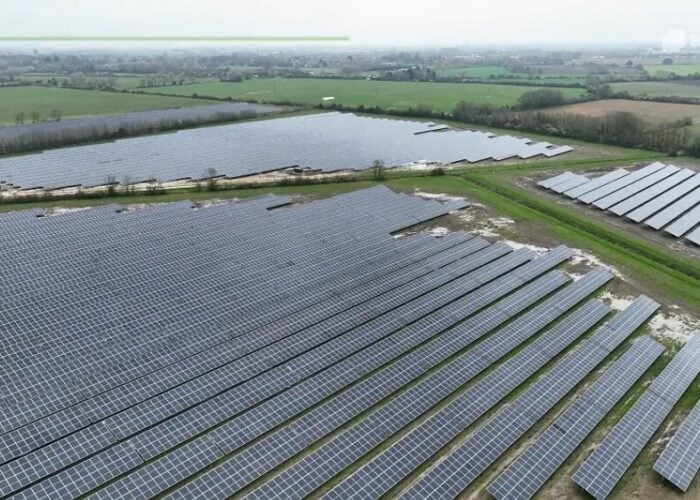It’s hard to believe that after more than two years of chronic overcapacity up and down the supply chain the PV industry has entered the next capacity expansion phase. The industry became burdened with a nameplate capacity of over 60GW by 2011, while global end demand was just over 30GW in that year, according to European Photovoltaics Industry Association data.
Burdened with such a significant level of overcapacity and end-market demand that barely expanded (to just 31GW) in 2012, the consequences were biblical in nature: plummeting prices across the supply chain resulted in very low production utilisation rates at best, closures, bankruptcies and exits from the industry at worst.
Try Premium for just $1
- Full premium access for the first month at only $1
- Converts to an annual rate after 30 days unless cancelled
- Cancel anytime during the trial period
Premium Benefits
- Expert industry analysis and interviews
- Digital access to PV Tech Power journal
- Exclusive event discounts
Or get the full Premium subscription right away
Or continue reading this article for free
Since then the industry has experienced over two years of profitless prosperity and capital expenditure (capex) budgets were slashed to facility and equipment maintenance levels only.
However, strong growth recovery in global end markets in 2013 meant installations topped over 36GW, according to NPD Solarbuzz. The market research firm’s latest PV Equipment Quarterly predicts the freeze in spending by equipment suppliers over the past two years will finally thaw by early 2015 as a rebalancing of supply and demand took effect.
Solarbuzz said the overcapacity in the sector led to PV equipment spending falling to an eight-year low of US$1.73 billion in 2013, down from US$13 billion in 2011. This means equipment suppliers in 2013 saw bookings of less than US$1 billion.
But Solarbuzz predicts that over the next six months PV end-market demand will catch up with the 45GW of “effective capacity” within the industry.
The market research firm expects 49GW of end-market demand in 2014 would push production utilisation rates well above 90% for tier-one manufacturers, while pushing many to increase production outsourcing from wafers, cells and through to modules.
However, the new real growth phase for equipment manufacturers will be driven primarily by a small number of tier-one manufacturers – a reflection of how the recent shakeout has consolidated the supply chain.
But a key will be technology-driven spending, as China based manufacturers are being pushed by government polices to push module cell/module efficiencies beyond 20%.
Market research firm, IHS recently tweaked its capex forecast, up US$430 million in 2014 to a total of US$3.8 billion.
IHS had previously said that spending would increase by 42% from the lows of 2013 and reach US$3.37 billion in 2014.
Major c-Si capacity expansion plans
Since the fourth quarter of 2013, there have been a growing number of planned capacity expansions, some which are at the gigawatt level.
Canadian Solar
Canadian Solar has already increased module assembly capacity at its plant in Ontario, Canada from 330MW at the end of 2013 to 530MW of as of 31 January 2014. Total nameplate capacity at module production plants in China and Canada currently stands at 2.6GW, up from 2.4GW in 2013.
Canadian Solar has typically used a flexible, vertically integrated manufacturing model but has significantly smaller capacity in ingot/wafers (200MW) and solar cells (1,500MW) than module assembly (2.6GW).
However, the company recently raise around US$200 million, for further expansion of manufacturing capacity to 3GW to meet growing demand.
JinkoSolar
JinkoSolar added several hundred megawatts of module capacity in 2013. The company had 1.5GW of annual nameplate capacity for silicon ingots, wafers and solar cells and approximately 2.0 GW for solar modules.
However, this year, Jinko Solar recently announced it was acquiring Topoint, which would provide the company with 500MW of cell and 500MW of wafer capacity plus 100MW of module capacity, bringing its total nameplate module capacity to 2GW plus.
Trina Solar
Trina Solar has also followed the acquisition route to gaining new capacity with the purchase of a majority shareholding in Hubei Hongyuan PV Science and Technology, a small solar cell producer, as well as taking over operations of tier-two module manufacturer, NESL Solartech.
The deal was struck with Chinese conglomerate Yabang Investment Holding Group, owners of NESL Solartech. The new joint venture will be called Changzhou Trina Yabang Solar Energy Co., Ltd. Trina Solar will hold a 51% stake and Yabang Group will have a 49% interest. The facility will be managed by Trina Solar management, according to a statement.
Trina Solar said that the total investment by both companies would be approximately US$45 million, a sum that will be used for capital expenditure and working capital requirements.
NESL Solartech had a PV module nameplate capacity of 400MW, which under the JV investment is expected to be increased to 500MW before the end of 2014.
Trina Solar would also form a joint venture with Shenzhen S.C. New Energy Technology Corporation, the owner of Hubei Hongyuan PV Science and Technology, taking a 51% stake in the solar cell producer with the operations renamed as Hubei Trina Solar Co., Ltd.
The partners said that the existing production facilities would be expanded to a capacity of 420MW by mid-2014.
Having recently detailed its module capacity levels after line upgrades and throughput improvements that effectively took annual nameplate capacity from 2.4GW to 2.8GW, Trina Solar’s module capacity now stands at 3.3GW, or 900MW higher than mid-2013.
Solar cell nameplate capacity increased to 2.6GW, providing the potential need for 600MW of outsourced cell production in 2014.
Trina Solar is expecting capital expenditure to reach US$213 million in 2014 as it targets expansion of capacity from ingot/wafer through to 1GW of extra module capacity.
JA Solar
JA Solar also has plans to add capacity at existing production plants but has also ventured outside China for the first time with a recent announcement to join forces in operating a module assembly plant in South Africa.
JA Solar and Powerway have formed a joint venture to establish a PV module assembly plant in Port Elizabeth, South Africa with an initial nameplate capacity of 150MW. The JV partners said that production would start as early as the second quarter of 2014.
The plant is being located in the Port Elizabeth’s COEGA Industrial Development Zone and the partners have the option to ramp capacity to 600MW to meet expected demand in the country.
At home, JA Solar is keeping ingot/wafer production steady at 1GW each, but said that cell production would increase 300MW to 2.8GW in 2014.
However, the big step function is module capacity, with the company planning to add 1GW of capacity to reach parity with its planned cell expansion.
SunPower
SunPower has guided capex plans for 2014 that are nearly double spending in 2013. The company reported in its 2013 annual report that CapEx would be in the range of US$150 million to US$170 million in 2014, a possible increase of 88.8% from its 2013 guidance range of US$70 million to US$90 million.
The company had noted in its recent fourth quarter 2013 conference call that spending in the first quarter of 2014 would be in a range of US$25 million to US$30 million as it started to ramp the construction of its 350MW facility in the Philipines, Fab 4.
The company is expected to be capacity constrained throughout 2014, unless further expansion is made at its JV Fab 3 in Malaysia, which was reported to have a production capacity of 800MW but a nameplate capacity over 1GW. No plans have been announced to expand Fab 3 production in 2014, yet it would not be surprising for SunPower to provide an update on production plans in its conference call.
However, SunPower has revealed it is prepping plans for its next-generation ‘Fab 5’ manufacturing facility that would be on a larger scale than existing facilities.
The plant will be built as part of a major capacity expansion planned for 2015, once a new plant in the Philippines is complete.
Hanwha Q CELLS
Hanwha Q CELLS has started building a new solar cell plant at its Cyberjaya, Malaysia manufacturing complex in December 2013 that will house a 204MW solar cell production line. The new line would focus on producing high-efficiency solar cells for its Q.PRO G3 multicrystalline PV modules, which would be in production by early autumn 2014.
With the addition of the 204MW solar cell production line, Hanwha Q CELLS said the nameplate capacity of its Malaysian facilities would surpass 1GW with 1.1GW of integrated production capacity and a total production capacity of 1.3GW.
Wuxi Suntech
Wuxi Suntech is currently upgrading cell and module production lines in China ahead of plans to increase in-house module capacity in 2014.
Line upgrades relate to improved conversion efficiencies and take module production to between 2.4GW to 2.5GW, a 20% increase from official production levels at the end of 2011. The intention is to expand in-house capacity by the end of 2014 to between 3GW and 3.5GW.
According to the last published annual report of Suntech Power Holdings in 2011, Wuxi Suntech’s wafer and ingot production capacity stood at 1.6GW, while its cell and module capacity stood at 2.4GW.
SunEdison
Potentially the biggest planned expansion relates to SunEdison. The company said a few months ago that it was undertaking a feasibility study on establishing a fully integrated PV manufacturing complex, including FBR polysilicon production in partnership with the Saudi Arabian government.
The plans call for an investment of US$6.4 billion in a major complex that could potentially be started later in 2014. So far the company has not publically provided further details.
Major thin-film capacity expansion plans
The manufacturing sector that has suffered the most significant bankruptcies and plant closures in the last two years has been the thin-film segment. Even leading players such as First Solar cancelled significant capacity expansions in the US and Vietnam during this period.
However, there are several major plans that have been announced that trigger a renaissance in thin-film manufacturing, currently driven by CIGS technology based capacity expansions.
Hanergy Solar
Hanergy Solar has said it will start construction of a planned 3GW CIGS thin-film manufacturing complex in Caofeidian, Hebei Province, China in March 2014 with tool install starting by the end of the year.
Hanergy Solar is establishing a subsidiary, Hebei Caofeidian Hanergy Photovoltaic Co. Ltd, to own and operate the new complex. Initial plans are to build two separate production lines with a total nameplate capacity of 600MW.
Hanergy Solar said one of the turnkey lines with a nameplate capacity of 300MW would employ MiaSolé-based CIGS sputtering process technology, while the second line with a further 300MW would employ Solibro’s co-evaporating manufacturing process technology.
Both CIGS manufacturers were acquired by Hanergy Group and their technology licences transferred to Hanergy Solar and subsidiaries. The initial 600MW phase-one construction and equipment spending is estimated at approximately US$780 million.
Hanergy had also requested a two-year extension on its expansion plans for the existing MiaSolé Inc plant Santa Clara, California with the California Alternative Energy and Advanced Transportation Financing Authority (CAEATFA). Financial funding for the expansion was expected to be in place by the fourth quarter of 2015.
Solar Frontier
Leading CIS thin-film PV module manufacturer, Solar Frontier is planning to start construction of a new 150MW Tohohu CIGS plant in March, 2014.
Solar Frontier’s main Kunitomi Plant (900MW nameplate capacity) was said to have operated at full capacity from the start of 2013, while its Miyazaki with an annual production capacity of 60MW also resumed production in July 2013.
Very recently, Solar Frontier said it was considering establishing a 150MW production plant in Buffalo, New York after signing a memorandum of understanding (MOU) with the State University of New York College of Nanoscale Science and Engineering (SUNY CNSE).
Solar Frontier had previously said that its new 150MW plant in Japan would potentially become a benchmark for new production facilities in various key PV markets around the world.
Ascent Solar
Although US-based flexible CIGS thin-film manufacturer, Ascent Solar, had previously announced a JV thin-film plant in China, the company recently updated on the plans.
The company noted that the JV would build a 100MW CIGS thin-film manufacturing plant in the Suqian Economic and Industrial Development Science Park with the Municipal City of Suqian in Jiangsu Province
However, the initial production capacity would be 25MW and be fully operational in the first quarter of 2016, with the 100MW ramp taking place over a six-year period. Suqian was originally said to be providing cash of approximately US$32.5 million for the JV and retain a minority share. However, under the revised agreement, Suqian is expected to provide approximately US$4.8 million in cash and have a majority interest of 75% in the JV.
TSMC Solar
The CIGS thin-film firm, TSMC Solar recently told PV Tech that it was also expanding production from 40MW to 120MW in 2014 at its plant in Taiwan. The company noted that equipment purchases have been made and tool install in expected to have been completed by the end of the third quarter of 2014. TSMC Solar expects to fully ramp the new capacity in the fourth quarter of this year.
First Solar
In March, during its annual analyst day event, First Solar highlighted its next major CdTe thin-film production capacity expansion phase but this would not occur until 2015 with an additional 1GW of nameplate capacity. Nameplate capacity would remain at 1.8GW in 2014, excluding the 100MW c-Si TetraSun production plant currently under construction that was announced last year.
However, First Solar is planning a combination of existing manufacturing line throughput and module efficiency gains as well as new line capacity to provide a nameplate capacity of around 2.8GW by the end of 2015.
Effectively, First Solar is only adding around 200MW of new capacity in 2015, although that additional new capacity rate would steadily increase to around 400MW in 2016, around 700MW in 2017 and around the same level of new capacity again in 2018.
Let the expansions begin
With end-market demand set for strong growth over the next two years, it is clear that major capacity expansions are already underway in 2014.
As the ‘effective’ 45GW plus of capacity is expected to become exhausted in 2014, PV manufacturers could announce the next significant next wave of capacity additions later in the year, with many having to be greenfield sites.

